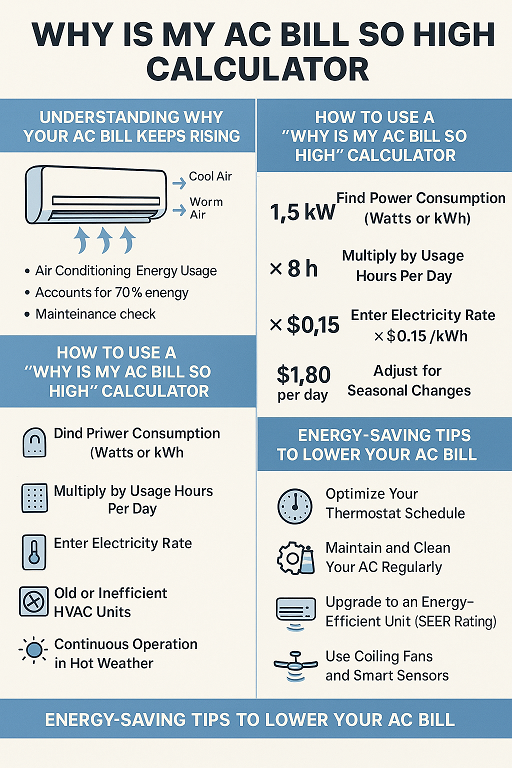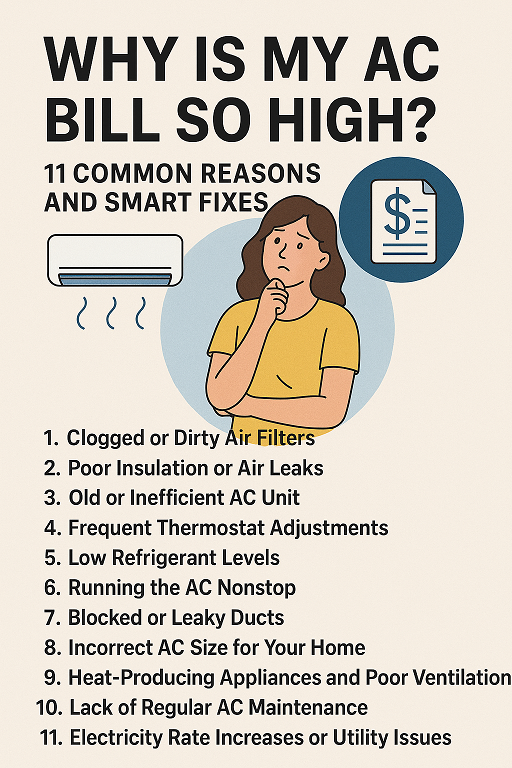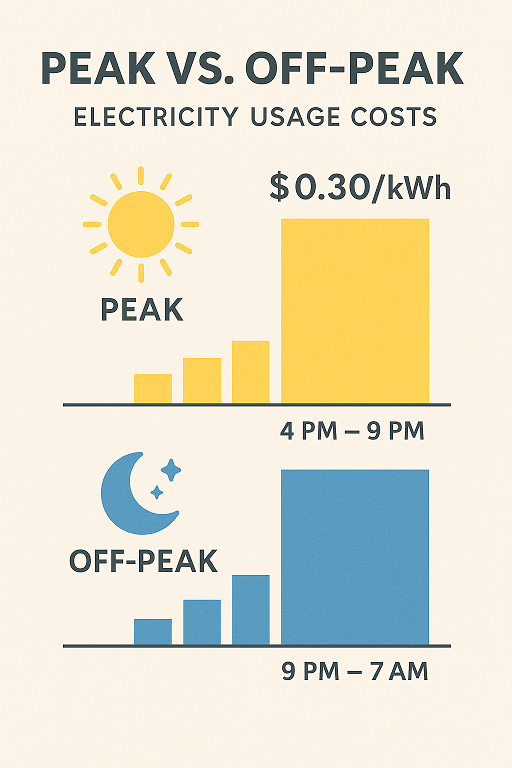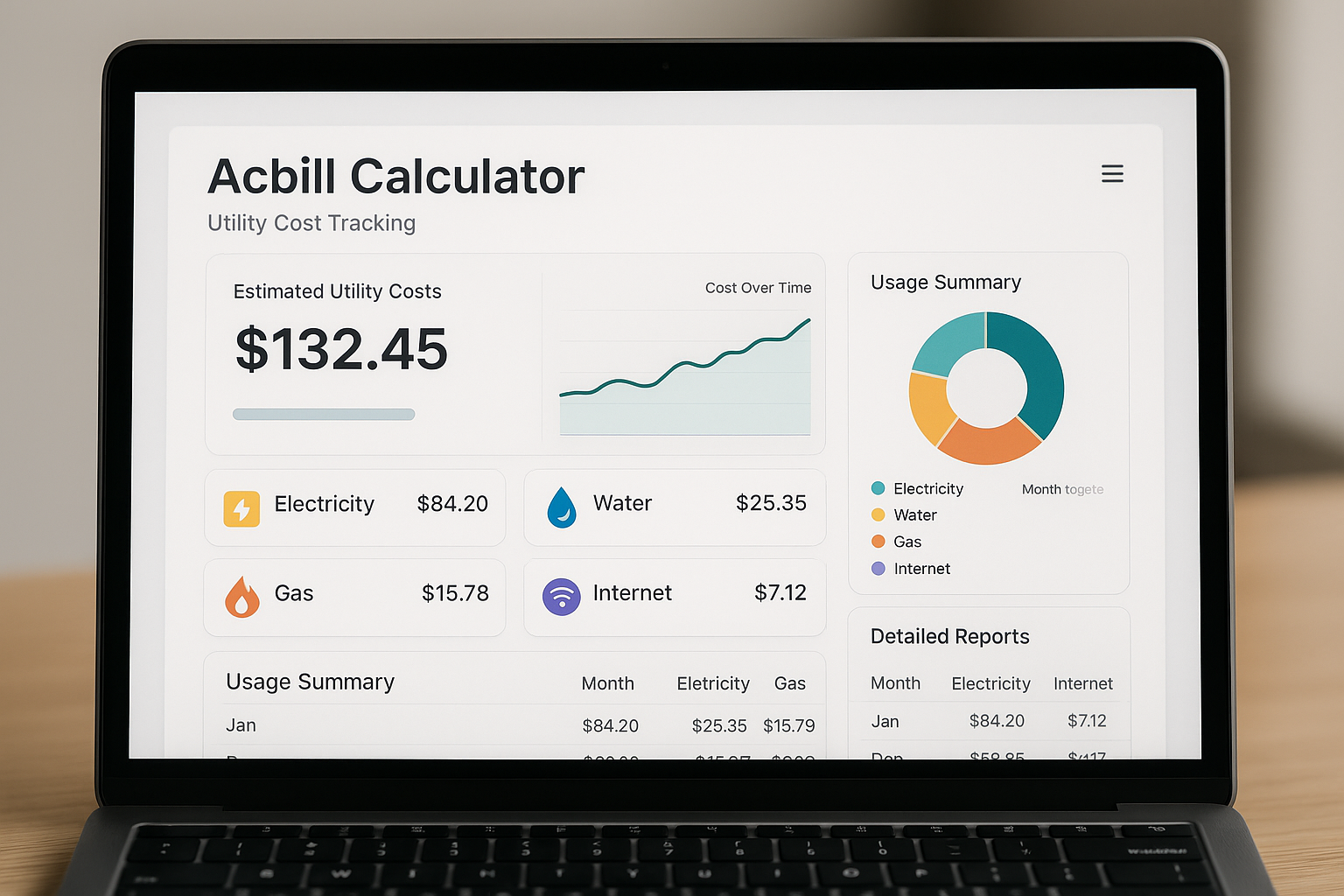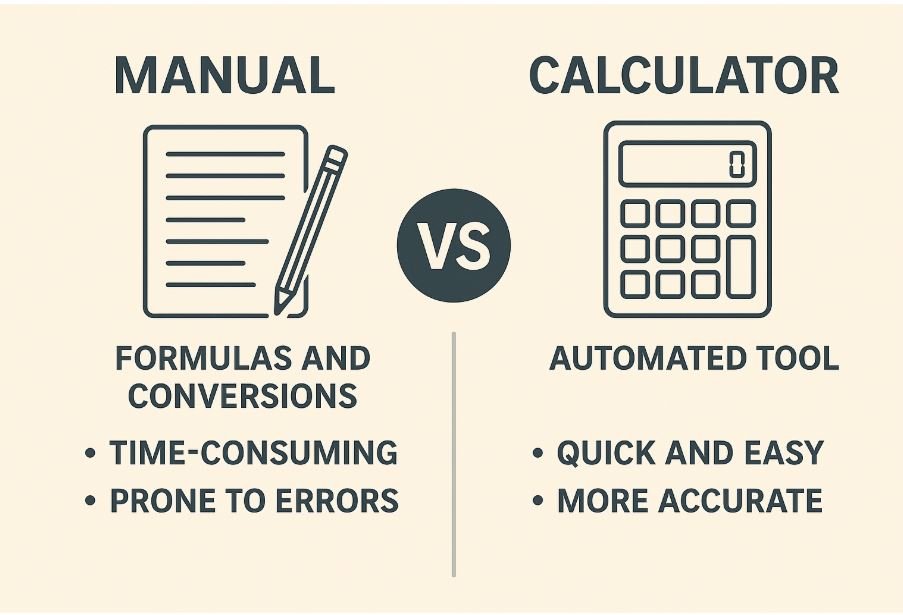
Calculator vs Manual AC Bill Estimation: Accuracy Test
Calculator vs Manual AC Bill Estimation: Accuracy Test
Introduction to AC Bill Calculation
One of the worst electricity consumers in homes and offices is the air conditioning (AC) unit. Whether you are planning your monthly expenses or even monitoring your energy usage, it is important to know how to calculate your AC bill. In the past, individuals used to calculate AC bills manually but online calculators are promising fast and accurate results. In this article, both methods are compared: manual and calculator, so that you can choose which one suits you best.
Why People Calculate AC Bills Manually
Conventional ways of getting an estimate of power consumption.
Prior to digital tools, people estimated energy use by using formulas. A simple formula is:
Energy Consumption (kWh) = Power (W) × Usage Hours ÷ 1000
As an example, when a 1500W ac is used 8 hours/day, then the usage is:
1500 × 8 ÷ 1000 = 12 kWh per day.
Common formulas for manual AC bill calculation
- Daily Cost = (Power used in kWh) x Electricity tariff (per kWh)
- Monthly Cost = Daily Cost × Number of Days
Benefits of manual calculation
- Transparency - You know how costs will be derived.
- Control - You can model scenarios by changing inputs.
- Education - Becomes more energy literate, and you will be more conscious of how you are using energy.
The Rise of AC Bill Calculators
How online AC bill calculators work
These tools mechanize the manual formula by addressing such values as wattage, daily use and tariff rate.
Key inputs required by calculators
- AC Power Rating (in Watts or in Tons)
- Daily usage hours
- Local electricity tariff
- Days in billing cycle
Benefits of using a calculator
- Speed – Instant results
- Convenience – No math needed
- Accuracy – Includes Decimals and Prevents Calculation Errors
Manual AC Bill Calculation vs Calculator: Side-by-Side Comparison
Accuracy levels in different conditions
- Manual: reliable when the inputs are accurate, though susceptible to human error.
- Calculator: Messier around the edges but no better than data in, data out.
Time and effort required
- Manual = Slower, calculations by step.
- Calculator = Instant results in seconds.
Error sources in manual calculation
- Improper conversion to unit (Watts to kW)
- Do not forget to multiply usage days.
- Misreading tariff rates
Limitations of calculators
- Could fail to take seasonal variation into consideration
- Assumes constant efficiency of AC
- The calculators will give different results with different tools.
Sample Comparison: Manual vs Calculator
Example setup
- AC: 1.5-ton (≈1500W)
- Usage: 8 hours/day
- Billing cycle: 30 days
- Tariff: ₹8/kWh
Step-by-step manual calculation
- Daily usage = 1500 × 8 ÷ 1000 = 12 kWh
- Monthly consumption = 12 months by 30 days = 360 kWh
- Cost per month = 360 × ₹8 = ₹2,880
Calculator results
When you plug in the same inputs into a calculator, you usually get: between ₹2,870 and ₹2,900, rounded.
Comparison
Results from manuals and calculators are close and calculators can save time and minimize small arithmetic errors.
When to Trust Manual AC Bill Calculation
Reliable scenarios
- When you wish to verify the answer of a calculator.
- When tariff rates are plain and even.
- For quick estimates without internet access
When it may mislead
- When the AC is variable power drawing ( inverter ACs ).
- When you estimate bad units or tariffs.
When to Trust an AC Bill Calculator
Best-case use
- When you way you want fast, right results
- To compare more many devices or use conditions.
Pitfalls
- Recklessly trusting the calculating machines without trying to check the correctness of setting up numbers can lead to false indications.
- EER/SEER efficiency ratings are not also captured by all calculators.
Hybrid Approach: Best of Both Worlds
- Begin by counting by hand to develop intuitions [and then models]
- Use calculators for accuracy and speed
- Confirmation of the cross-checking makes results confident.
External Factors That Affect AC Bill Accuracy
- Change in season - Hotter months imply an increase in the use of the AC.
- Efficiency ratings (EER/SEER) - Higher-rated ACs consume less energy.
- Local tariff variation - The price of electricity will differ according to state and season.
FAQs on AC Bill Calculation
Q1. Are hand calculations of the bill correct?
Yes, when done properly, but it is also subject to minute mistakes.
Q2. Manual or an AC bill calculator: which is superior?
To be exact and fast, it is better to use calculators. Manual works, to learn and validate.
Q3. Are AC bills calculable by calculators?
They are able but may not give a consistent result because inverter ACs do not exist as a fixed consumption.
Q4. Why isn’t calculation and by hand results the same?
Because of a rounding mismatch, an efficiency assumption, or input mismatches.
Q5. Are there electricity companies official calculators?
Certain power distribution companies provide official online calculators of bills.
Q6. What can I do to minimize costs of AC electricity?
Use of energy efficient ACs, keep filters clean, set thermostat (24-26°C) and insulating rooms.
Conclusion: Which Method Should You Rely On?
Manual calculation of Golok AC bill and calculator have their own roles. If you need clarity and learning, manual is best. But calculators are faster, convenient and less error prone. The smartest choice? Apply one to the other - do it by hand and verify with a calculator.
